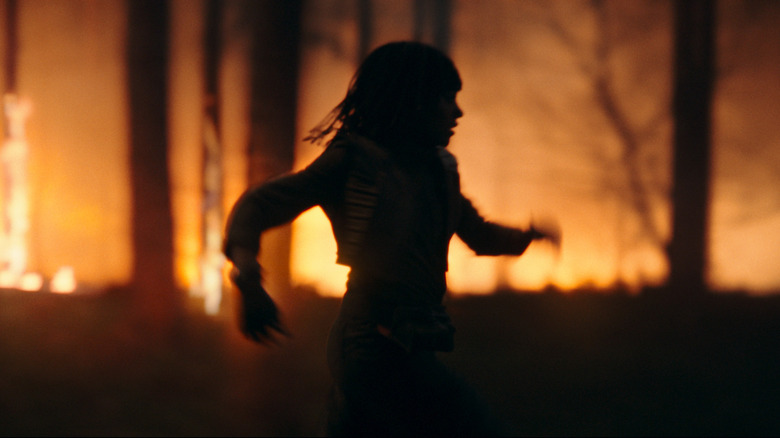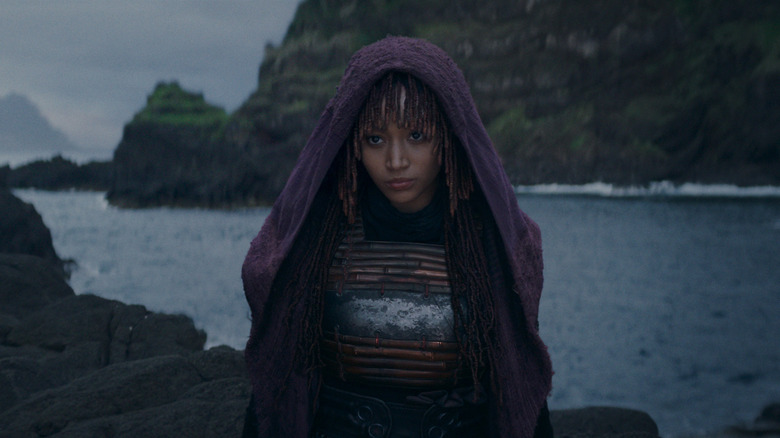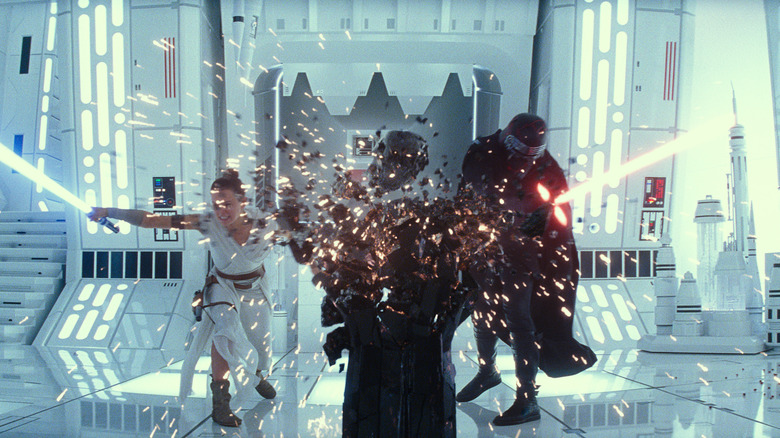The Acolyte May Have Resurrected Star Wars' Most Controversial Force Power
This article contains spoilers for "The Acolyte" Episodes 1 and 2.
After much anticipation, "Star Wars: The Acolyte" is finally here, bringing the High Republic era to live-action for the very first time. The first two episodes are a fascinating look at the galaxy before the prequel trilogy, with the Jedi at the height of their powers and influence. The show's premiere also includes some interesting lore teases, including the potential return of a controversial and incredibly powerful Force phenomenon: the dyad.
The main story of "The Acolyte" follows Mae and Osha, two twin sisters played by young star Amandla Stenberg. When Mae emerges after years of being presumed dead and starts killing Jedi, Osha — who left the order six years prior — is accused of the crimes. The deeper the rabbit hole goes, the more it seems like there's more going on between these two sisters than a simple blood connection.
At the end of "The Acolyte" Episode 1, Osha has a vision of Mae and they recite a spooky poem to each other. "You are with me, I am with you. Always one, but born as two," Mae says. "As above sits the stars, and below lies the sea, I give you you, and you give me me." It's giving major "Shining" vibes for one thing, but it might be more than just creepy twin-speak. Could this mysterious chant actually suggest that the sisters are a dyad in the Force?
Mae and Osha being a Force dyad would be a huge deal
The concept of a Force dyad was first introduced in 2019's "Star wars: Episode IX – The Rise of Skywalker." After a full trilogy of J. J. Abrams mystery-boxing, it was revealed that Kylo Ren, aka Ben Solo, and Rey Skywalker were a dyad in the Force — two beings so powerfully connected that they could achieve impossible feats when joined together. Since that film, the idea of the Force dyad hasn't been explored much, which might be at least partially due to the widely negative fan response to "The Rise of Skywalker."
The power's introduction was controversial to say the least, seen by some as a cop-out wrap-up of various hanging threads from throughout the sequel trilogy. If you're a Reylo shipper, you likely feel differently, and there are plenty of fans who enjoyed the concept, but it simply hasn't been utilized much. Regardless of your feelings on the dyad idea, there's indisputably a lot of potential there, and it could be fascinating to explore the ability in the High Republic era. The Jedi are at full strength during "The Acolyte," which might allow for a more complete exploration of the dyad if that is, in fact, what's going on.
As for Mae and Osha's story, we'll have to wait and see if this is actually a dyad or just some mystical sibling business. It's worth noting that in Episode 2, Mae believes that Osha is dead, which means that she didn't send the vision to her sister in Episode 1. Has she been having similar dreams as well?
Is a dyad the most powerful Force ability in Star Wars?
There are a lot of rare Force powers in "Star Wars," from canon abilities like psychometry to old EU (now "Legends") powers like Jedi battle meditation. The Force is interesting precisely because it isn't a "hard magic" system where everything is outlined in clear rules. There are guidelines, yes, and general principles that are typically followed, but the franchise has always left space open for the impossible, the mysterious, and the unexplained.
The Force dyad seen in the sequel trilogy primarily manifests as a kind of cosmic connector. Through it, Rey and Kylo are able to speak, see each other, and even interact physically, passing objects across space to one another. In their final showdown with the resurrected Emperor Palpatine, the Sith Lord uses their connection like a battery, which he drains to restore himself. That suggests an immense amount of raw life energy being generated by the dyad bond — something that might explain how Ben is able to bring Rey back from the dead.
Other than those couple of scenes, though, the dyad remains uncharted territory. We're told in the sequel trilogy that such a connection hasn't been seen in many generations, but since "The Acolyte" takes place about 200 years before "The Rise of Skywalker," it could still fit the timeline. Whether or not that's actually what's going on with Mae and Osha, or if their strange poem means something different entirely, remains to be seen.


